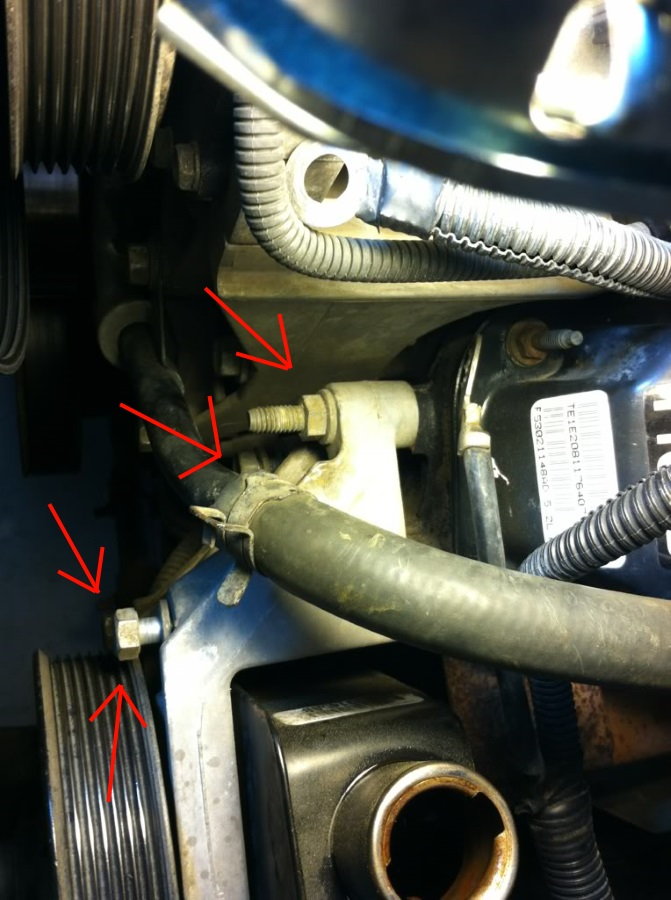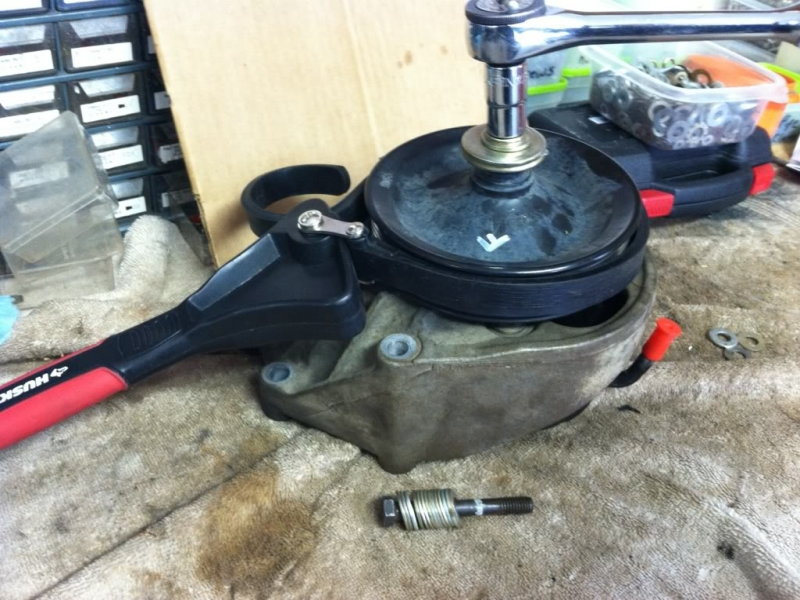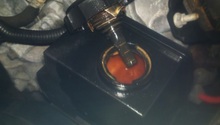Dodge Ram 1994-2001: How to Replace Power Steering Pump
Power steering pumps continuously turn as the engine is operating to keep a pressurized supply of fluid available at the steering rack. Power steering pump failures happen, and when they do, your stuck cranking the wheel with two hands until a new pump is installed.
This article applies to the Dodge Ram 2nd Generation (1994-2001).
Power steering pumps can fail for a number of reasons. The pump can run low on fluid and can cause damage to the pump gear as well as housing. Seals inside the pump can deteriorate over time from dirt and the use of incorrect fluid. Vibration from worn engine mounts or a rough engine misfire can cause bearings inside the pulley shaft to become damaged, creating noise and a loss in system efficiency.
Fortunately for 2nd generation Ram owners, the pump is conveniently located at front and top of the engine, making the job easier than most other makes and models.

Materials Needed
- Power steering pump
- 3-4 quarts of MS5139 or equivalent power steering fluid
- Power steering pulley removal and installation tools (installation tool is optional; see Step 8)
- Two (2) 3/4-inch clamps
- Shop towels
- 9/16", 15mm, 18mm wrenches
- 9/16" deep, 15mm, sockets (your pulley removal tool may require others)
- 1/4" socket or nut driver
- Floor jack
- Two (2) jack stands and block of wood
Step 1 – Remove the serpentine belt
Using a 15mm wrench, twist the serpentine belt pulley to remove tension from the belt. While holding the pulley in the open position, remove the belt from the accessory pulleys.

Step 2 – Remove the fluid from the power steering pump
This can be done in several different ways. Refer to the Related Article: How to Change Power Steering Fluid.
The most common means of doing this is to use a suction device (turkey baster, syringe, or comparable) and suck fluid up from the power steering reservoir, cycling the fluid from the pump by moving the steering from lock-to-lock a few times. Then, removing the additional fluid.
Step 3 – Raise and support the front of the truck
Set the parking brake. Using a floor jack, raise the front of the truck high enough to place a jack stand underneath the frame rail. Do this for both sides. You can place a block of wood between the jack stand and frame rail to reduce the chance of damage from the stand.

Step 4 – Remove the pump lines
There are two lines connected to the power steering pump. The upper line is the return, and a squeeze clamp secures the rubber portion of the line to the hard portion. While squeezing the clamp, pull the line and twist the rubber line off the hard line. A screwdriver can be used to pry the line off as well.
Now, using an 18mm wrench, remove the pressure line. It will be easier to access from underneath the truck.
Plugging both of these lines with a correctly sized bolt will ensure no fluid leaks out and nothing falls into the system.

Step 5 – Remove the power steering pump and bracket
Three bolts and one stud with a nut hold the bracket to the engine. The stud is located at the upper left of the bracket. Remove the nut with a 9/16" wrench, working around the coolant hose. There will be two ground wires attached to the stud. Move them up and out of the way.
Now remove the stud as well as the remaining three bolts with the 9/16" wrench and socket. The bolts are in pairs long and short.
Remove the bracket and pump assembly from the engine.

Step 6 – Press off the power steering pump pulley
Note the position of the pulley on the pump shaft. The pulley is flush with the end of the pulley shaft.
Grab your power steering pump removal tool, and position the fingers onto the edge of the pulley with the correctly sized rod (if needed) installed to remove the pulley. Keep turning the bolt until the pulley slides off the shaft.

Step 7 – Transfer bracket and mounting studs to new pump
Four 15mm bolts hold the bracket onto the pump. The bolt at the five o'clock position is shorter than the others. Also, remove the two 18mm mounting studs on the opposite side of the pump and tighten them onto the new pump.

Figure 6. Transferring the bracket over to the new pump. 
Figure 7. The red circles indicate the pump mounting studs.
Step 8 – Install the pulley onto the new pump
You can use a power steering pump pulley installation tool or two standard 5/16" bolts (one at 2-3" of length and the other at 1 and a quarter-inch) with a stack of 5/16" washers.
You will need to hold the pulley in place with a strap wrench or similar tool. Begin pressing the pulley onto the shaft by using the longer bolt and finish with the shorter. The pump has been fully installed once the pump face is flush with the shaft.

Figure 8. Installing the pulley onto the new pump. 
Figure 9. Checking the pulley is flush to the shaft.
Step 9 – Install the new pump onto the engine
Reverse the removal process to complete the installation.
- Locate the pressure line and install a new O-ring onto the end.
- Once everything has been bolted back up, fill the reservoir with new fluid (MS5139 or equivalent) until it reaches the cold full mark. Refer once again to How to Change Power Steering Fluid article.
- Lower the truck back down and start the engine again. A whining sound coming from the pump indicates a pump with low fluid level or air still in the system. Repeat the bleeding procedure and/or check for fluid leaks.
- With the engine running, make sure the serpentine belt is tracking straight on the pulley and the pulley is not wobbling on the shaft.
If all is good, the installation is complete. Well done!

Featured Video: How to Change Power Steering Pump
Related Discussions
- DIY Power Steering Pump Install - DodgeForum.com
- Power Steering Pump Issues - DodgeForum.com
- DIY Power Steering Pump Rebuild - DodgeForum.com






